This post may contain affiliate links. Please read our disclosure policy.
Here is a guide to the different kinds of salt commonly called for in recipes. I mostly use table salt in my cooking, but many other bloggers and cookbook authors prefer kosher salt or suggest finishing a dish with flakey sea salt. Meanwhile, bakers love fine sea salt. What is a cook to do?
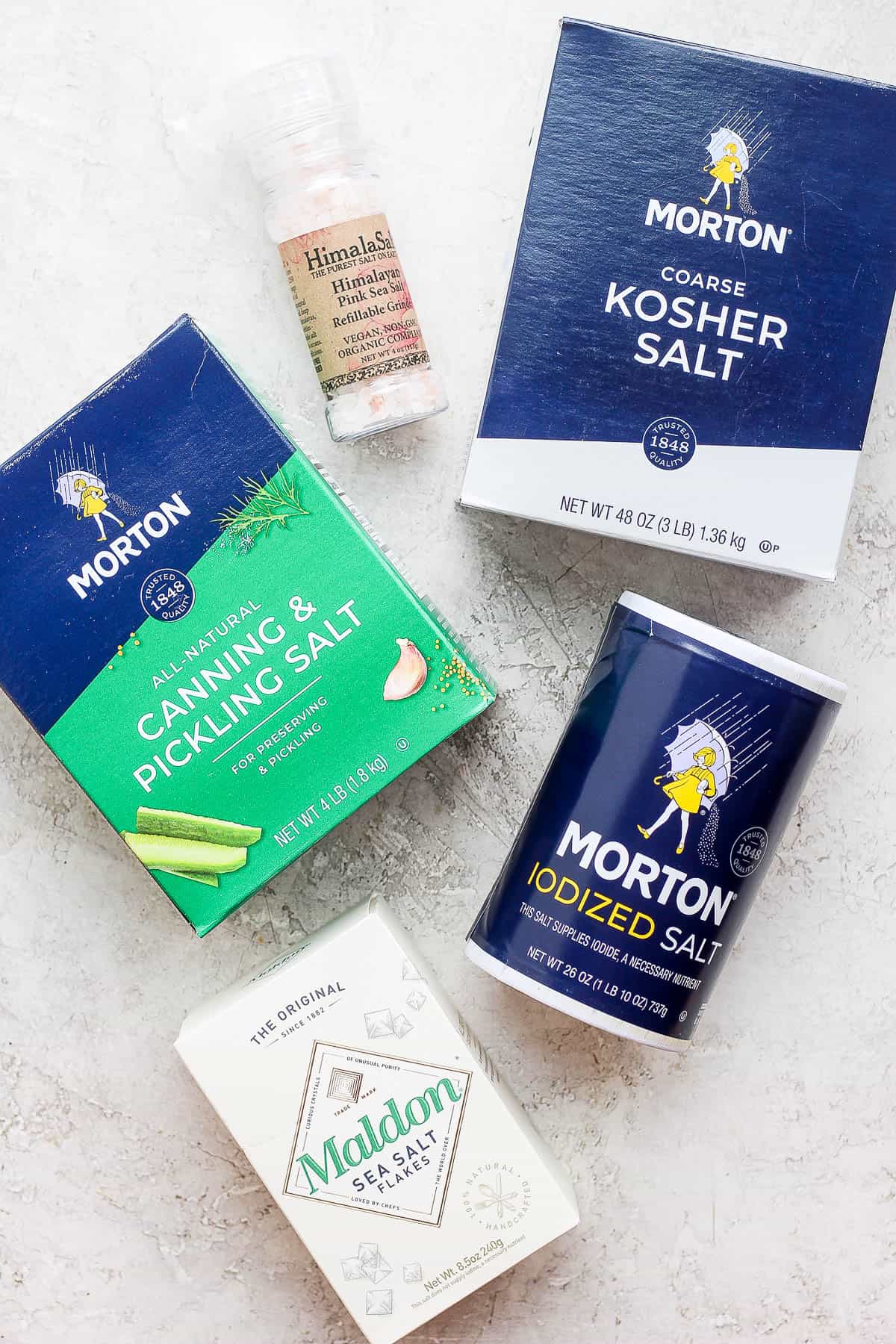
First, what is salt?
- A naturally occurring mineral: Salt – sodium chloride or NaCl- has been used for millennia to preserve and flavor food. It comes from the ocean or landlocked salt deposits left by dead seas.
- A flavor and a flavor enhancer: Picture salt as a primary color of the food world. Salt is its own flavor AND it enhances other flavors. Think about salted caramel.
- A multitasker: As Samin Nosrat says in her seminal book Salt Fat Acid Heat, salt “has a greater impact on flavor than any other ingredient.” She continues, “used properly salt minimizes bitterness, balances out sweetness, and enhances other aromas, heightening our experience of eating.”
- A chemical catalyst. When added before cooking, salt tenderizes proteins like meat and eggs and softens vegetables during sautéing.
- Nutritional necessity: Our bodies require salt to transmit nerve impulses, make muscles work, and maintain hydration levels.
Guide to different types of salt
For maximum versatility, stock a variety of salt in your cabinet. Here are five of the most popular salts for cooking. I stock the first four but don’t buy the pickling salt, since I don’t pickle enough to warrant buying it.
Table salt
- Usage guide: Also known as common salt, this is the presumed salt if a recipe does not specify a different kind. Table salt is the small, uniformly-grained salt found in shakers and round cardboard containers everywhere.
- Origin: Mined from salt deposits, some table salt is iodized, to add a nutrient once deficient in daily diets. It contains anti-caking agents. Because of these ingredients, many chefs say they detect and dislike its chemical taste.
- Especially good for: Every day, economical use and accurate measurements for baking. Also, performs better in humid climates. Dissolves easily in liquid.
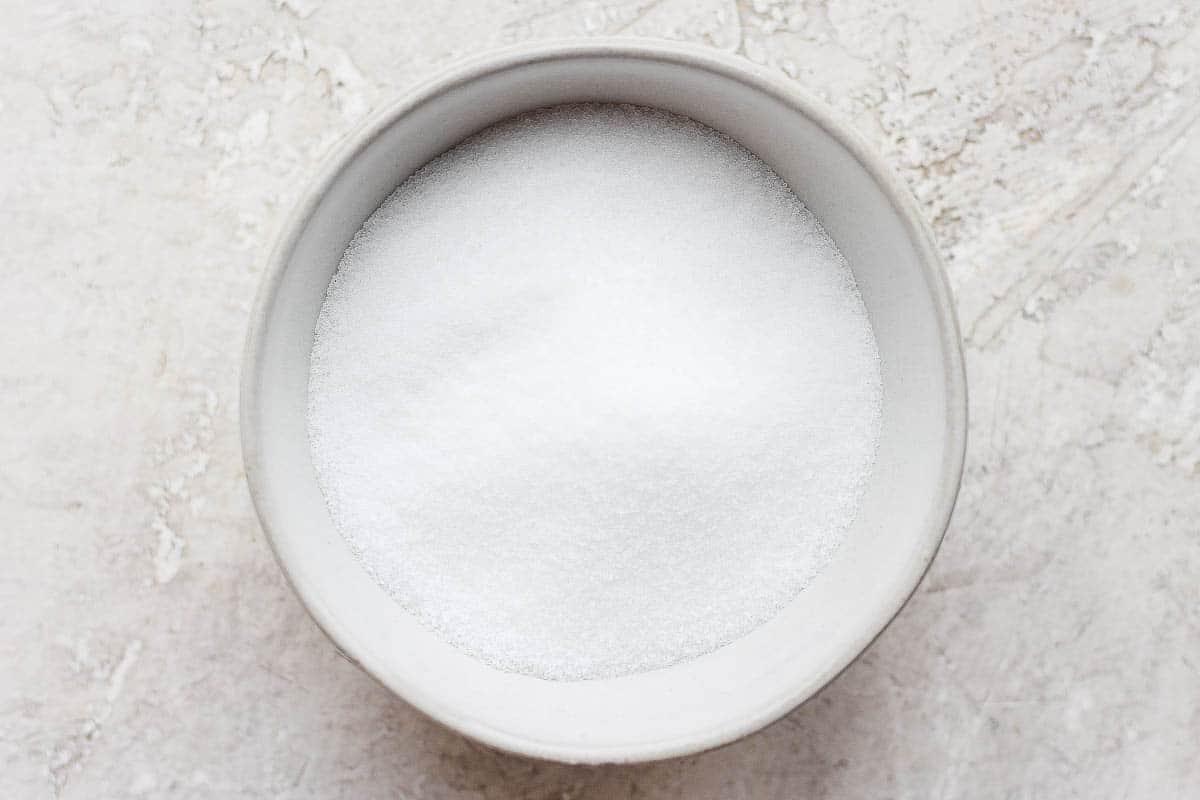
Sea salt, fine and flakey
- Usage guide: Fine sea salt is interchangeable with table salt, and many bakers prefer it because it usually has no anti-caking agent or iodine. Flakey sea salt costs more because of its artisanal evaporation process. Save it for finishing foods, sprinkling onto sweets or salads, or grilled steak, salmon or chicken.
- Origin: Derived the age-old way from evaporated seawater, sea salt is often named for its places of origin, like Maldon salt from England, Hawaiian salt, or fleur de sel from France.
- Especially good for: Many dessert recipes specify a sprinkle of chunky sea salt on top, which brings out their sweetness.
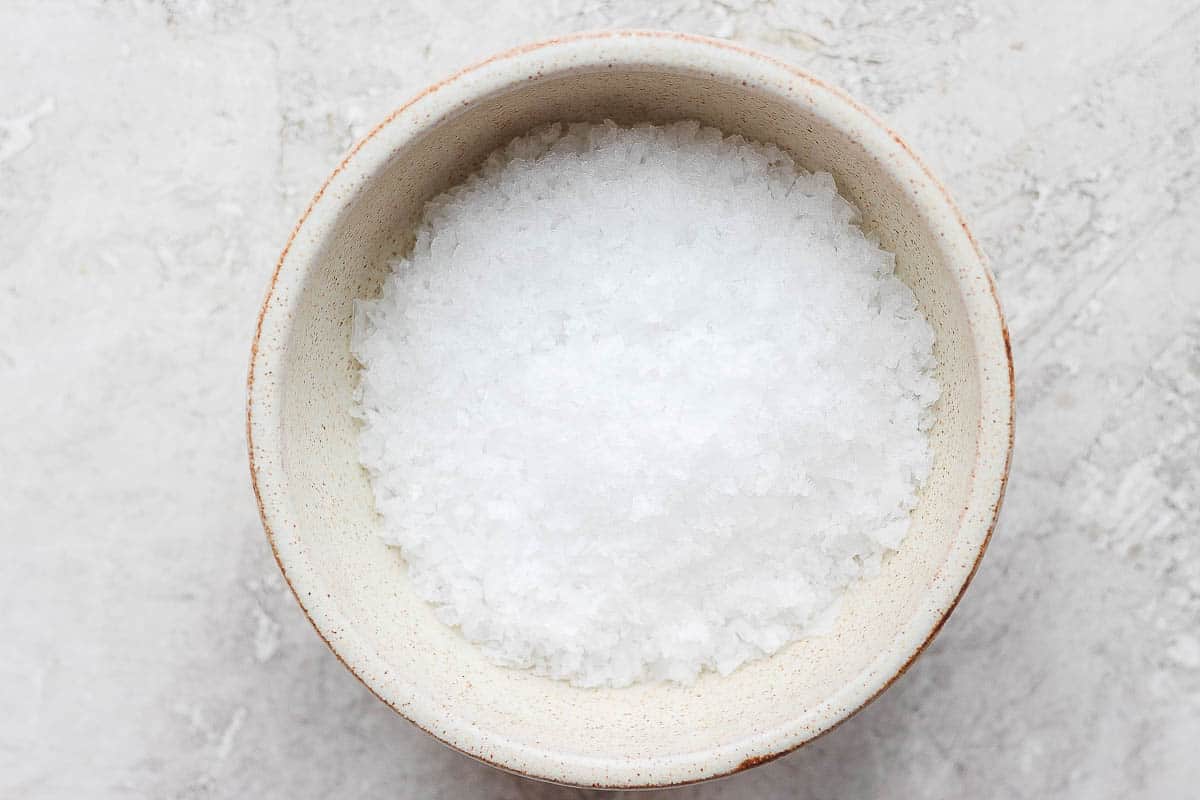
Kosher salt
- Usage guide: Chefs love using kosher salt to season meat poultry, and fish before cooking, salting pasta water, and adding seasoning to dishes while sautéing. They rave about its pinch-ability, saying that the larger crystals allow them to grab a pinch without fear of oversalting.
- Origin: Comes from salt mines and does not contain iodine. It is called kosher because it was developed for kosher butchering.
- Watch for differences: The two leading brands are Diamond (red box) and Morton (blue box.) Because of differences in their crystal sizes, Morton by volume, or teaspoon by teaspoon, is heavier and saltier than Diamond. And, Diamond has no additives, while Morton puts in an anti-caking ingredient.
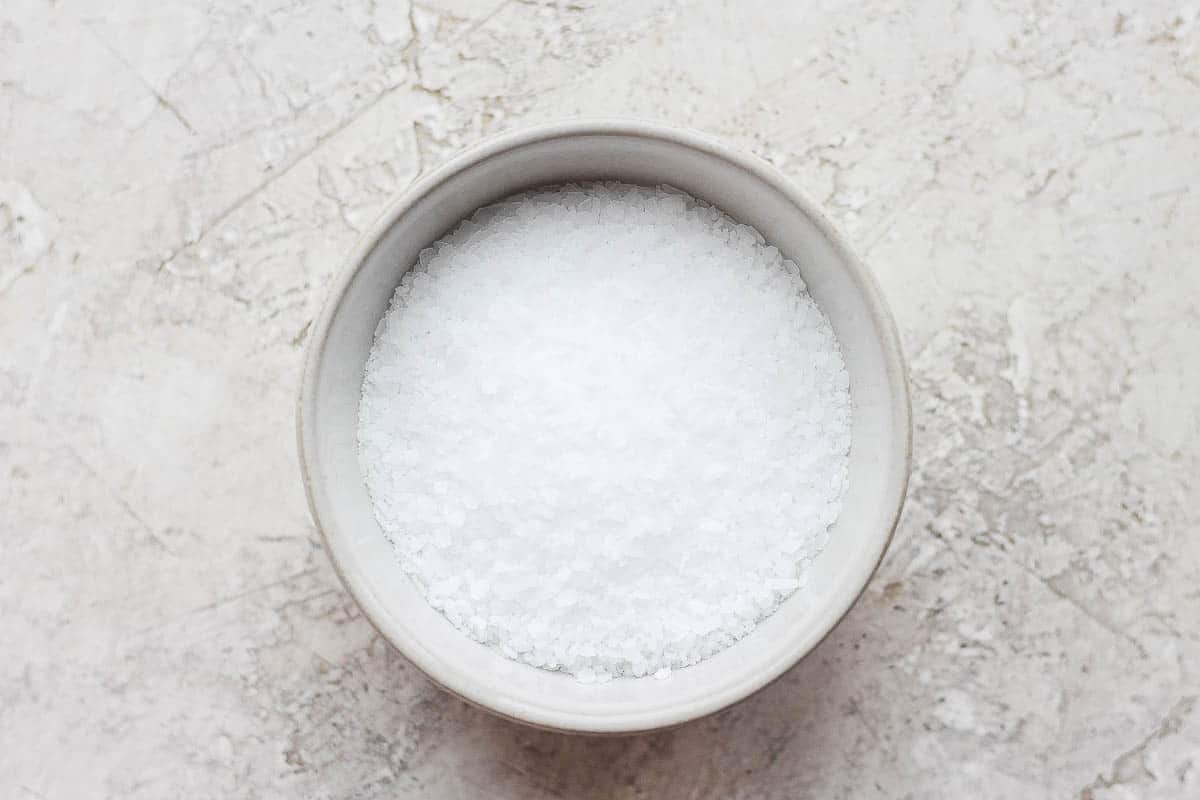
Himalayan Salt:
- Usage guide: The fine-grain variety is interchangeable with fine sea salt. Employ chunkier versions like flakey sea salt.
- Origin: Himalayan hails from salt deposits in the Pakistani Himalayas. Its mineral content makes it pink, which is pretty but does not add a discernible amount of nutrients.
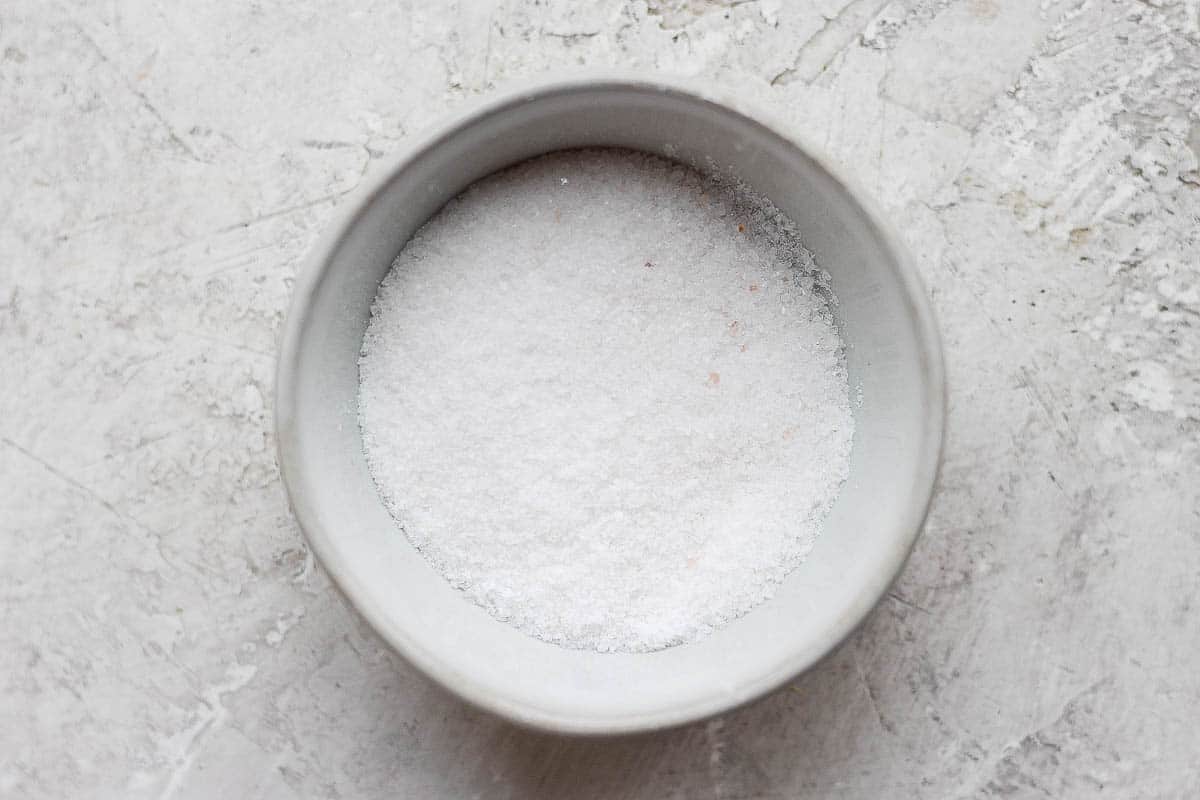
Pickling salt
- How to use it: Pickling salt possesses a very fine grain – finer than table salt -so it dissolves quickly in brines. One-hundred percent natural, it has no additives to avoid cloudy or colored brines.
- Origin: Salt mines
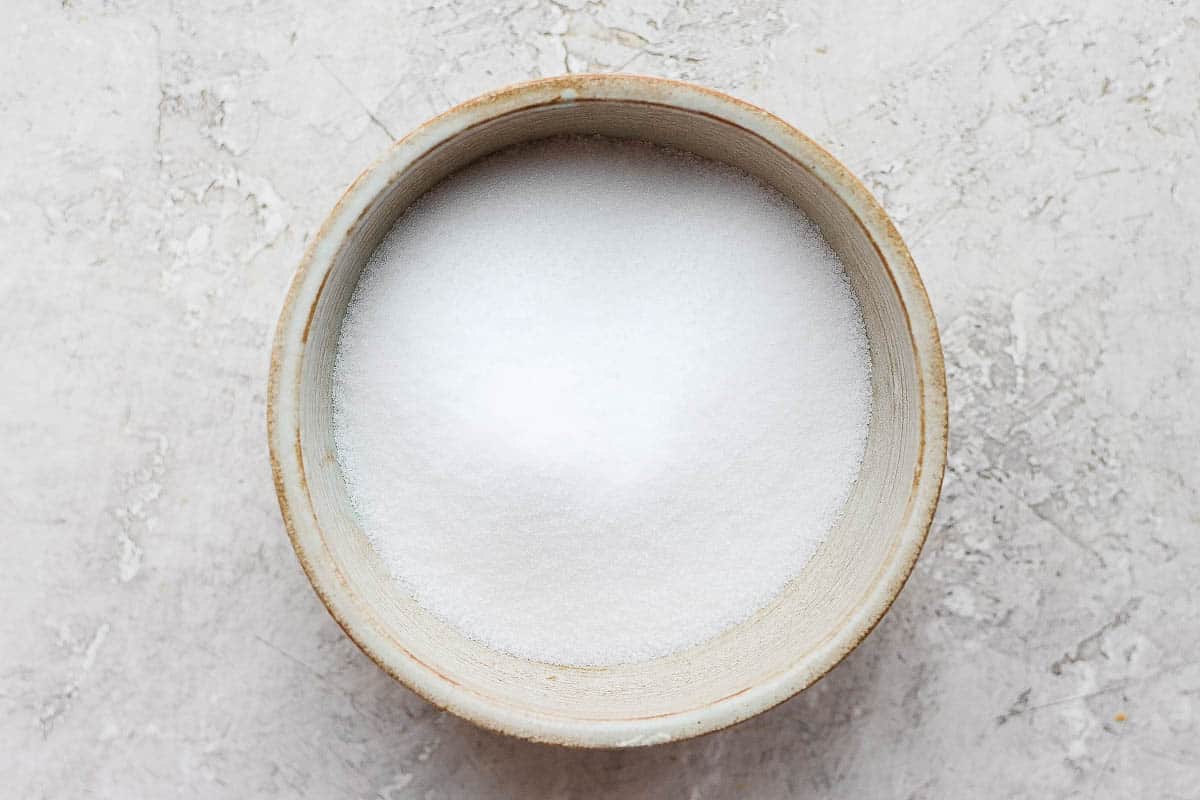
Guide to salt measurements & substitutions
First, remember, the default salt is usually table salt. And second, recipe writers frequently use volume (i.e, teaspoons and tablespoons) to measure salt. As a general rule, the larger the salt’s crystal, the less salty it will be by volume. So you might need two teaspoons of flakey salt to equal a teaspoon of table salt.
- Fine-grained sea salt or Himalayan salt can be substituted one for one with table salt.
- 1 ½ teaspoons of Morton Kosher equals 1 teaspoon of table salt
- 2 teaspoons of Diamond Crystal Kosher equals 1 teaspoon of table salt.
- Swapping kosher brands? 1 ½ teaspoons of Morton is equal to 2 teaspoons of Diamond.
- Using Morton brands? Refer to their handy chart.
Frequently asked questions
For general cooking, the best salt to use is the one you are most familiar with. As you cook, you will get an idea of how much to use and avoid the dreaded oversalting. For baking where accuracy is key, stick to table salt or fine sea salt unless directed otherwise.
Read your recipe thoroughly. When using a new cookbook, consult the intro or other guide pages to see if the author mentions a preferred type. For instance, in my (2008) How to Cook Everything, Mark Bittman says his go-to is kosher salt, although he does not specify a brand
No. All salt is salt, sodium chloride. The health issues of salt tend to be around overuse. Processed foods always contain salt. For instance, when using canned tomatoes or store-bought stock, be aware that they already contain salt and adjust your salting accordingly.
The right amount of salt can save a dish. Over salting kills one. When salting a dish throughout cooking, always aim for slightly under salting and adjust at the end. Be especially conservative with sauces, stews, chilis, or soups that reduce as they cook.
Did you find your favorite salt from a blogger or cooking show, or do you buy what your family bought? Are you curious to try another type of salt after learning more about the different kinds of salt available for cooking?

For more cooking guides:
- How to Stock your Pantry
- How to Stock a Freezer
- Food Storage Tips
- How to make your kitchen more efficient
If you find this guide on salt helpful, I’d love to hear from you! And if you snapped some shots of any of these tips and tricks or recipes with protein powder, please share it with me on Instagram so I can repost on my stories!





